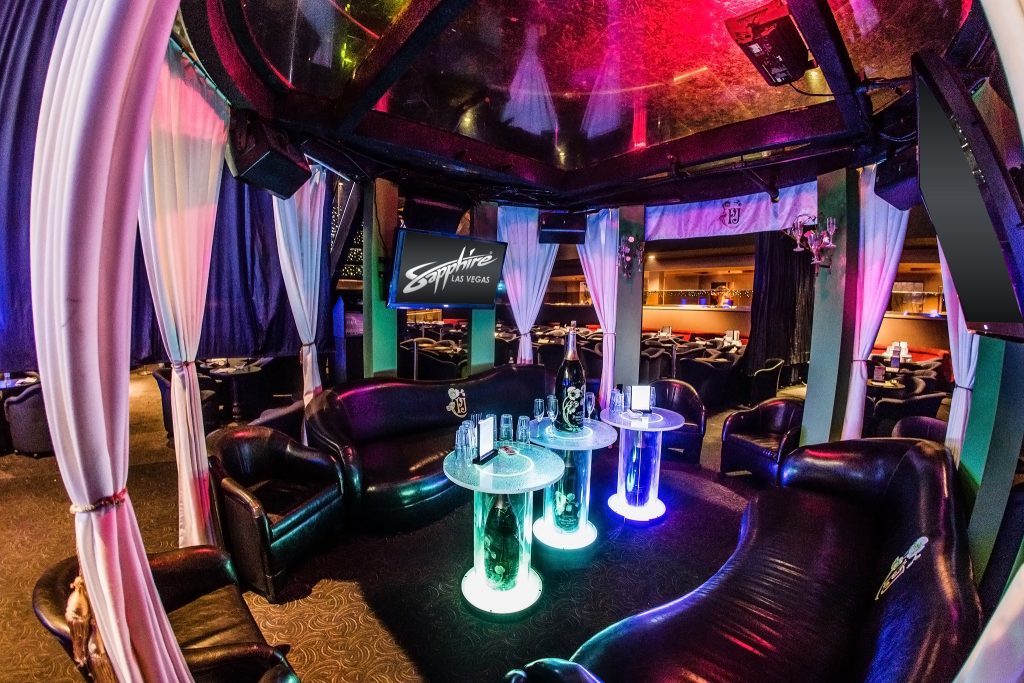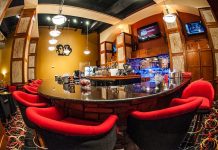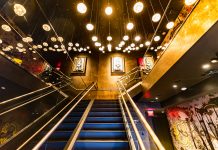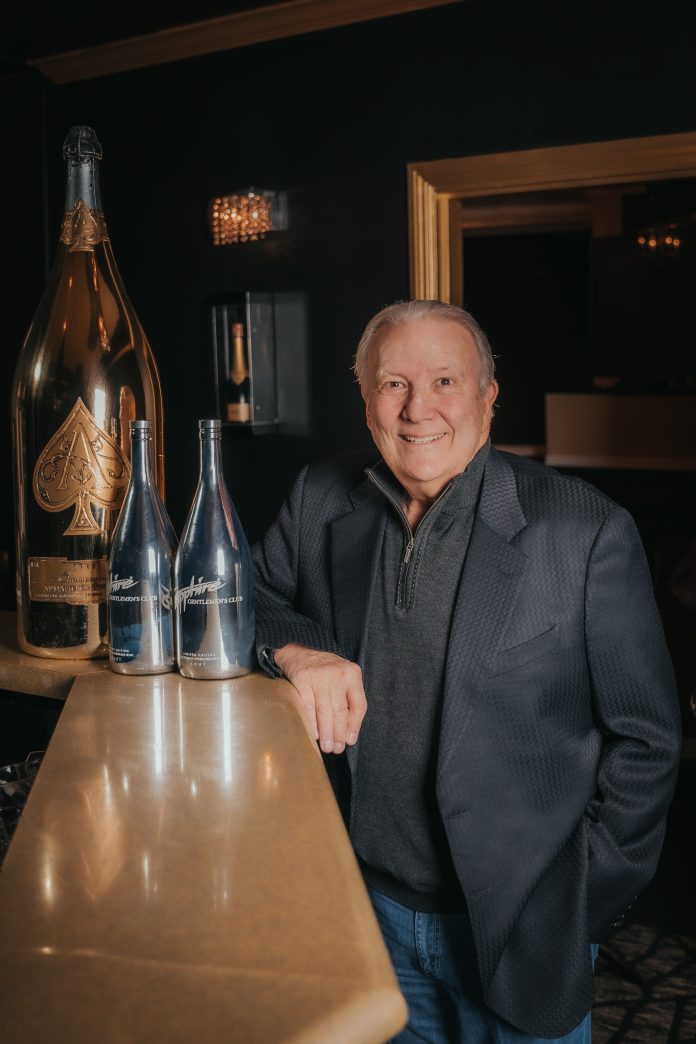(Note: This story appears in the January 2023 issue of ED Magazine)
Peter Feinstein has adopted — quite successfully — the formula for health and wellness centers and modified it for his Sapphire Gentlemen’s Clubs.
Sapphire Clubs managing partner Peter Feinstein grew up in Los Angeles and attended UCLA and USC graduate school. After friends convinced him to take the CPA exam, he became a CPA and worked for a large LA firm before starting his own Century City firm in the mid-70s.
One of his first clients, Mike Talla, was starting a luxury health club company and needed investment and organization help. Feinstein introduced him to some wealthy clients who became primary investors. They built around 15 very successful health clubs.
Little did Feinstein know this introduction would ultimately shape his future in a world far from that of a traditional CPA as the operator of iconic, highly innovative adult nightclubs.
ED Legal Correspondent Larry Kaplan spoke with Feinstein about innovation, getting to the top of the mountain, staying there, and giving back to your community.
ED: How did you go from the life of a CPA to that of an adult nightclub innovator?
FEINSTEIN: Mike Talla and the Sports Club Company decided to expand into larger health clubs. I assisted in the financial areas of the company. I eventually became an owner, and together helped build the Sports Clubs, LA, Irvine, and Boston, the Reebok Club in New York, and buy the long-standing Vertical Club, New York, on 61st, between First and Second. The Vertical Club building also housed a tenant, Scores, which Howard Stern was then helping to make famous.
About 25 years ago, we requested Scores’ financial statements to renew their lease. Upon analyzing them, we realized their 10,000-square-foot gentlemen’s club was grossing twice what we were with a 150,000-square-foot athletic club. Clearly, this was an interesting business.
We also owned The Sporting House Athletic Club, a 70,000-square-foot Las Vegas health club on seven acres in the heart of town. It had been a Las Vegas mainstay for years but was no longer grossing well. So we decided to transform it into one of the first mega gentlemen’s clubs, which became Sapphire. The main room, which had been the full-court basketball court, is huge. The side rooms had been racquetball courts, and we had a pool outside. We opened in December 2012.
We took many of the organizational principles and marketing programs from our health clubs and organized Sapphire into an actual operating business, which became very successful. As a result, I believe Sapphire is one of the most well-known adult clubs anywhere.
“We took many of the organizational principles and marketing programs from our health clubs and organized Sapphire into an actual operating business, which became very successful. As a result, I believe Sapphire is one of the most well-known adult clubs anywhere.” — Peter Feinstein
ED: It’s interesting how you’ve adapted the fitness club model to adult clubs.
FEINSTEIN: Health clubs must continuously sell memberships. It’s a constant sales and marketing program, precisely what gentlemen’s clubs must employ; hosting creative new events and coming up with things to bring people in every day.
We have a unique position because unlike clubs in most other places, we’re 80% tourists, who are challenging to reach without a program geared to that. So we have a full-court press to ensure tourists know where we are, what we’re doing, what our programs are, and what events we’re hosting to bring them in on a nightly basis. That’s the key.
Today, every hotel has at least one major nightclub and a significant pool concept. And that’s our biggest competition. The hotels strive to keep everybody there 24/7. We present R-rated adult entertainment and offer programs that make it fun to come to and easy to get here with our own fleet of vehicles. Our goal for 20 years has been getting people to spend two to three hours a night out of their hotel over their three-day Las Vegas trip, and that’s how we’re able to entertain 300,000-400,000 people annually.

ED: What features did you initially add when you converted the health club to Sapphire?
FEINSTEIN: We came from LA where we had a suite at the Staples Center. Despite not being a great viewing area for games, there was tremendous demand from our friends to visit our suite. So the first thing we did to differentiate Sapphire from the health club was build suites looking down from the second floor.
We now have 10 suites and six sky suites up there. People like being up in that area and having an overview of the club. And that’s where we make a lot of our money. So the key to this business is getting high-end customers into the suites and selling champagne. That’s where the party begins.

ED: What ingredients led Sapphire to remain among Las Vegas’s top destinations?
FEINSTEIN: We’ve done an excellent job of creating an environment that feels like a nightclub when you walk in so that couples, bachelor and bachelorette parties feel comfortable. It doesn’t hit them that it’s a strip club; instead, it’s a beautiful nightclub where everybody can have fun. And incidentally, there’s R-rated entertainment going on there, too. We sell lots of couples’ packages; they love coming to the club. We also do plenty of bachelor and bachelorette parties. We focus on that because sexy ingredients must come into play to ensure they have a good time.
We started the topless pool five years ago, the Sapphire Day Club, with 17 beautiful cabanas. That’s added a huge element for us. On Friday, Saturday, and Sunday, we average 600-700 people daily. Guys walk in, see this topless pool and feel like they’ve died and gone to heaven.
Another thing separating us is having our own charitable foundation, the Sapphire Prostate Cancer Foundation, which has raised, to date, $4 million. I had prostate cancer 20-plus years ago and was lucky enough to get through it successfully. We’ve helped 500-600 prostate cancer victims over the years. We use that money to help Las Vegas men who are fighting prostate cancer. They’re a bit upside down — perhaps behind on rent, mortgage, or car payments. So we provide funds almost immediately to relieve that financial pressure while they’re going through that stressful process. We just held our 15th annual team Ping Pong Palooza tournament, with over 40 teams from Las Vegas restaurants, nightclubs, and companies. Each team must have at least one female player; the event is very competitive. We raised almost $60,000 this year, and everyone had a great time.
![]()
ED: Operators often try to have nearby clubs to build a brand, but you have clubs 2,500 miles apart. What led you to purchase the New York clubs? And what challenges do having clubs so far from Las Vegas bring?
FEINSTEIN: The club management is decentralized. Our first New York club was the old Scores, which was attached to our health club. About 15 years ago, when that club had legal issues, they came to us to buy. We weren’t looking to expand to New York; it was just an opportunity that arose and made sense. Everybody knows that 60th Street club, and we have a terrific steakhouse. We now have two additional clubs at 39th Street and Times Square.
ED: Can you compare your Las Vegas customers with those in New York?
FEINSTEIN: They’re absolute opposites. In New York, 75% of our customers are local, and 25% are tourists. So we’re catering differently; the marketing concept is entirely different. Our New York management and competent employees who’ve been there a long time are experts in that business and do a terrific job of bringing people in.
These are smaller clubs, averaging 10,000 square feet, while Las Vegas is 70,000 feet. We can get 2,000 people in the Las Vegas club and do perhaps $50,000 that night. They can get 12 guys in one of the New York clubs on a rainy, stormy night and do the same $50,000. So it’s just a totally different business.
We’ve done an excellent job of creating an environment that feels like a nightclub when you walk in so that couples, bachelor and bachelorette parties feel comfortable. It doesn’t hit them that it’s a strip club; instead, it’s a beautiful nightclub where everybody can have fun. — Peter Feinstein
ED: Tell me about the current cab/Uber/Lyft payout situation in Las Vegas.
FEINSTEIN: It’s not cabs, Uber, or Lyft’s fault. It’s the clubs making decisions over the years to pay more or less, depending on their revenues. Some clubs viewed paying drivers as their marketing program, which doesn’t work. The pandemic resolved much of that because people got used to using Uber/Lyft. And the Uber/Lyft drivers actually got reprimanded for trying to take kickbacks. The problem has been pretty much resolved, as the cab situation isn’t as dramatic anymore. Most of our customers are accustomed
to calling Uber while they’re finishing dinner, walking outside, getting their Uber, and coming to whatever club they want. In past years, guys would take a cab, and the cab would go to whomever was paying the highest. One of the only positives that came about as a result of COVID is that everybody in Vegas got used to using Uber/Lyft, which resolved most of the big payouts. Real marketing is what you do to make your club successful and is the key to the club business.
Larry Kaplan has for 22 years been the Legal Correspondent for ED Publications. In addition, Mr. Kaplan is a business broker in the sale and purchase of adult nightclubs and adult retail stores and the Executive Director of the ACE of Michigan adult nightclub state trade association. Contact Larry Kaplan: at 313- 815-3311 or email larry@kaplanclubsales.com.





























